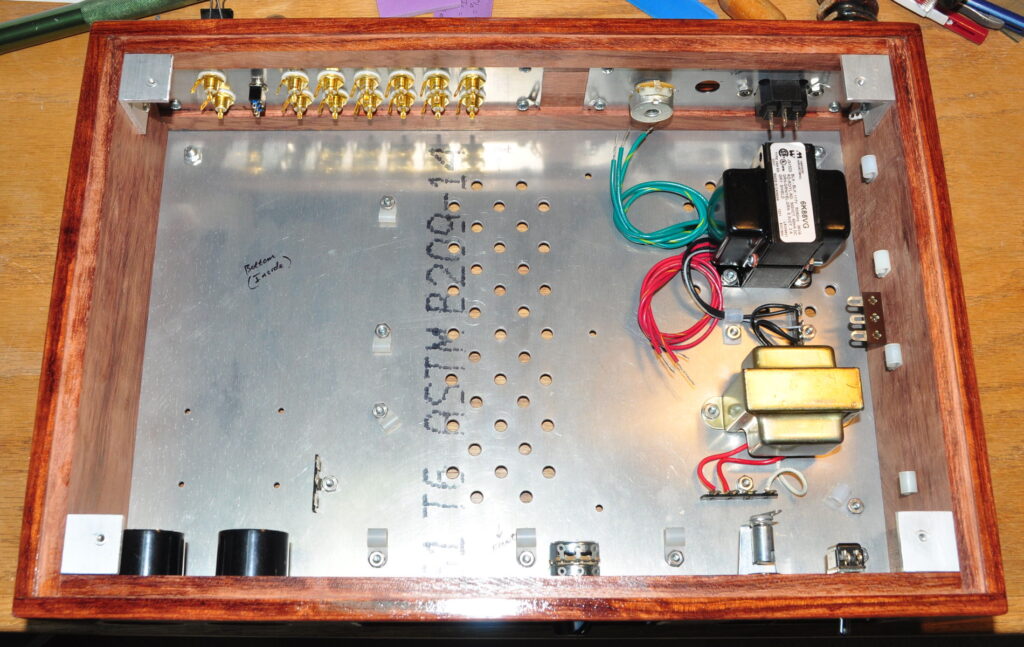I’ve been waiting for some wire I needed for twisted pairs and a Fender style fuse holder. I really like these fuse holders. I find them sturdy, good looking, and reliable. I have some cheaper ones but I reserve those for brassboards, quick projects, test equipment, and the like. While I’ve been waiting for my deliveries, I’ve been populating the chassis.
Here’s how it looks today.
As I said, the fuse holder is missing and the selector switch won’t be installed until all the twisted pair pigtails are soldered in place. But it’s beginning to feel like a real piece of equipment.
As always, questions and comments are welcome.
3 June 2023 – Update: Corrected the “brassboards link above.


Quick question:
Would it have been possible to rectify, filter, and regulate power from the 6V heater winding of the main PT (maybe use a voltage doubler) to power the meter board?
I can’t imagine the board having a high current draw (maybe a few 10’s of mA).
The issue is not current but voltage. The board I have is designed for AC input. It uses a small bridge rectifier and an LM78M12 to supply the 12V DC to the board. The regulator requires 13.8Vdc minimum input. Adding about 1V for the bridge rectifier drop means that the minimum AC input is 14.8/1.414≈10.5v. So I am feeding the board 12Vac. I could feed the board DC but the minimum voltage would be 14.8vdc which I simply couldn’t get from the 6.3vac filament winding.
If I had a power transformer with a 12.6VAC filament winding instead of the 6.3vac I could skip the second transformer. But small 12VAC transformers are cheap and plentiful (this one was free from my parts stash). I decided this was the best way to go.
Up above, I mentioned a voltage doubler – might be worth a bench test. But after giving it some thought, it may not work in this application because I presume you might be grounding the CT of the 6.3 volt winding. Could cause some funky, maybe even damaging ground loops. The 2 separate isolated power sources is probably the best option in this case.
When faced with a choice between a complicated voltage doubler/tripler and a simple & cheap transformer, I’ll choose the transformer every time.